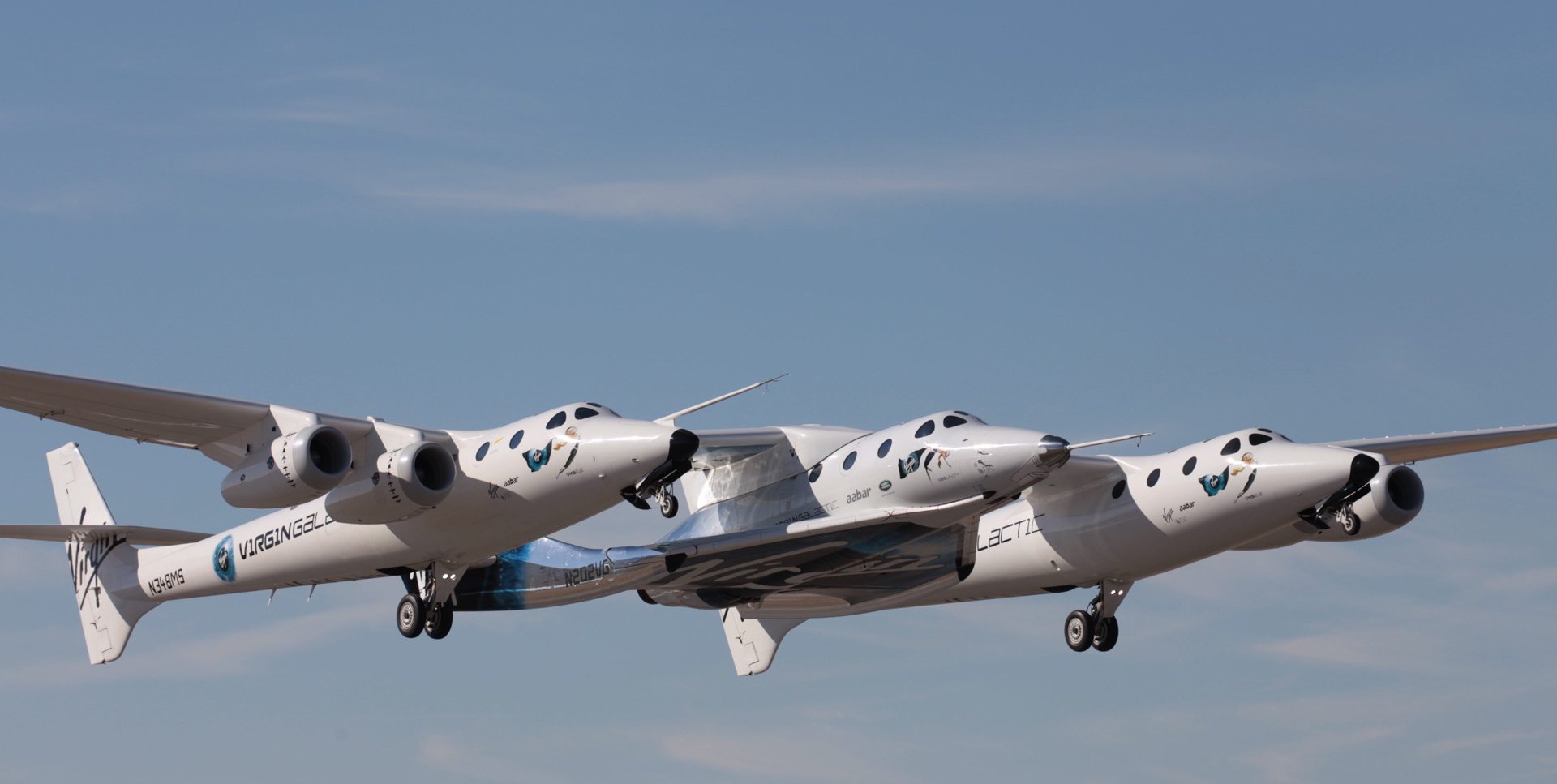Virgin Galactic's newest space plane has taken to the skies again.
The suborbital SpaceShipTwo vehicle, known as VSS Unity, completed its second-ever powered test flight today (May 29), soaring high over California's Mojave Desert.
"The focus of today's flight was to expand our understanding of the spaceship's supersonic handling characteristics and control system's performance with vehicle parameters that were closer to the ultimate commercial configuration," Virgin Galactic representatives wrote in a statement. "This involved shifting the vehicle's center of gravity rearward via the addition of passenger seats and related equipment." [Virgin Galactic's VSS Unity Spaceliner in Pictures]
During the flight, they added, VSS Unity fired its rocket motor for 31 seconds, as planned, and reached a top speed of Mach 1.9 and a maximum altitude of 114,500 feet (34,900 meters). (Mach 1 is the speed of sound, which is about 767 mph, or 1,235 km/h, at sea level.)
The two-pilot, six-passenger SpaceShipTwo is hauled aloft by a carrier aircraft known as WhiteKnightTwo and then is dropped from an altitude of about 50,000 feet (15,000 m). The space plane then engages its onboard rocket motor to blast itself upward.
Today's mission was the 13th flight overall for VSS Unity, which was unveiled in February 2016. Four have been "captive-carry" tests, in which the space plane remained attached to WhiteKnightTwo, and seven have been unpowered "glide flights." The other powered test flight occurred on April 5.

That was a huge milestone for Virgin Galactic; it was the first powered mission since Oct. 31, 2014, when the company's previous SpaceShipTwo, VSS Enterprise, broke apart midflight. The tragic accident killed co-pilot Michael Alsbury and seriously injured pilot Peter Siebold.
Get the Space.com Newsletter
Breaking space news, the latest updates on rocket launches, skywatching events and more!
Investigators later determined that a design issue allowed Alsbury to unlock SpaceShipTwo's "feathering" descent system prematurely. Engineers addressed that problem before building VSS Unity, Virgin Galactic representatives have said.
The only people aboard Unity during today's flight were pilots Dave Mackay and Mark "Forger" Stucky. But the vehicle could begin flying paying customers as early as this year if the test campaign continues to go well, Virgin Galactic representatives have said. Company founder Sir Richard Branson has said he plans to be on the vehicle's first commercial flight.
"Today we saw VSS Unity in her natural environment, flying fast under rocket power and with a nose pointing firmly towards the black sky of space," Branson, who was on the ground along the space plane's flight path today, said in the same statement.
"The pathway that Unity is forging is one that many thousands of us will take over time, and will help share a perspective that is crucial to solving some of humanity’s toughest challenges on planet Earth," he added.
Tickets to ride SpaceShipTwo currently sell for $250,000 apiece. Passengers will experience several minutes of weightlessness and get to see the curvature of Earth against the blackness of space during their suborbital ride.
But Unity won't just be about tourist joyrides; the vehicle will also fly a variety of scientific experiments to space and back.
Follow Mike Wall on Twitter @michaeldwall and Google+. Follow us @Spacedotcom, Facebook or Google+. Originally published on Space.com.
Join our Space Forums to keep talking space on the latest missions, night sky and more! And if you have a news tip, correction or comment, let us know at: community@space.com.

Michael Wall is a Senior Space Writer with Space.com and joined the team in 2010. He primarily covers exoplanets, spaceflight and military space, but has been known to dabble in the space art beat. His book about the search for alien life, "Out There," was published on Nov. 13, 2018. Before becoming a science writer, Michael worked as a herpetologist and wildlife biologist. He has a Ph.D. in evolutionary biology from the University of Sydney, Australia, a bachelor's degree from the University of Arizona, and a graduate certificate in science writing from the University of California, Santa Cruz. To find out what his latest project is, you can follow Michael on Twitter.









